Brandenburger Tor
- Address: Pariser Platz
- Tags:
 What to see Berlin,
Berlin,
Germany
What to see Berlin,
Berlin,
Germany
- Telephone: +49 30 250023
- Website: http://www.berlin.de/orte/sehenswuerdigkeiten/brandenburger-tor/
The Brandenburg Gate
The Brandenburg Gate, or the 'Brandenburger Tor', is one of the most famous monuments in Berlin. It is located in Pariser Platz (Paris Square), close to the Reichstag.
Although it bears resemblance to the typical Arch de Triomphes which can be found in many cities, this monument was actually used as an entrance gate to the city, and only the most privileged were permitted to use the central passageways.
Twenty-six metres tall, the Brandenburg Gate is formed of six parallel columns, connected by a large rectangular block above which is crowned by the famous quadriga sculpture (a type of Roman chariot drawn by four horses).

The cuadriga was used in Roman times by victorious generals. During the Napoleonic Wars, General Napoleon commanded the cuadriga of the Brandenburg Gate be brought to France as a trophy, but he was defeated shortly afterwards and the sculpture was returned to Berlin. It was also seriously damaged during the Second World War. The most famous cuadrigas in the world are located atop the Brandenburg Gate, on the Louvre carousel in Paris and on the Centenary Arch in Brussels. I've been lucky enough to have seen them all, and my favourite one was the one in Paris, although the cuadriga in Berlin was more majestic and a better representation of triumph.
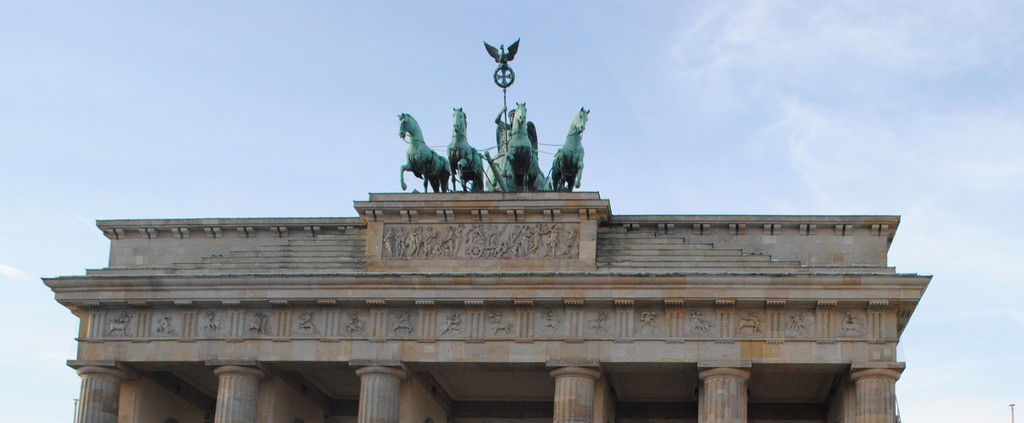
What's strange is that although it functioned as a gate in the past, when the Berlin Wall was built, the Brandenburg Gate was placed in no man's land, making it accessible to very few people.
The Brandenburg Gate also went down in history when Hitler was named Chancellor of Germany in 1933 and a large celebratory parade passed through the gate. The gate is famous for being the background of the photos taken that day.
Today, the gate is one of the most iconic and representative symbols of Berlin, and many important celebrations are held on the square next to it.
When I visited the gate, there were lots of tourists taking photos and admiring the monument, but there were also some yellow vans there which slightly ruined the view. However, I don't think the square is as big as it seems to be in photos of celebrations which take place there, but this is often my opinion when I visit places for the first time. I was also lucky enough to visit the gate with a friend who had done her Erasmus exchange in Berlin, and it was her who told us the most interesting information about the gate and who helped us to navigate our way through the city.
At night, the gate is lit up and it's well worth coming back then to enjoy the view. I preferred it illuminated by night than during the day, but both views are good.
How to get there
You can get to the Brandenburg Gate using the metro: the station is called 'Brandenburger Tor' and is on the U55 line. You can also use the nearby metro and city train station 'Friedrichsstrasse', which connects with far more lines: if you're travelling with the city train (called the S-Bahn), take the S5, S2, S1 or S7 lines, or with the metro (called the U-Bahn), take the U6.
Photo gallery
Content available in other languages
- Español: La Puerta de Brandeburgo
- Italiano: La Porta di Brandeburgo
- Français: La Porte de Brandebourg
The Brandenburg Gate in Berlin: A spoonful of history and a hundred kilos of reflection
The Brandenburg Gate or "Brandenburguer Tor" in German, is one of the most important symbols in the city of Berlin in Germany. This is one of the most important monuments in Germany because it used to represent an entrance into the city; it was like a customs point. It's the only one of the two gates which Berlin used to have that is still standing to this day. This very emblematic gate is very old; it was inaugurated in 1791 as a symbol of triumph of peace over weapons (how ironic). Its antiquity isn't reflected in its structure since it has been very well conserved.
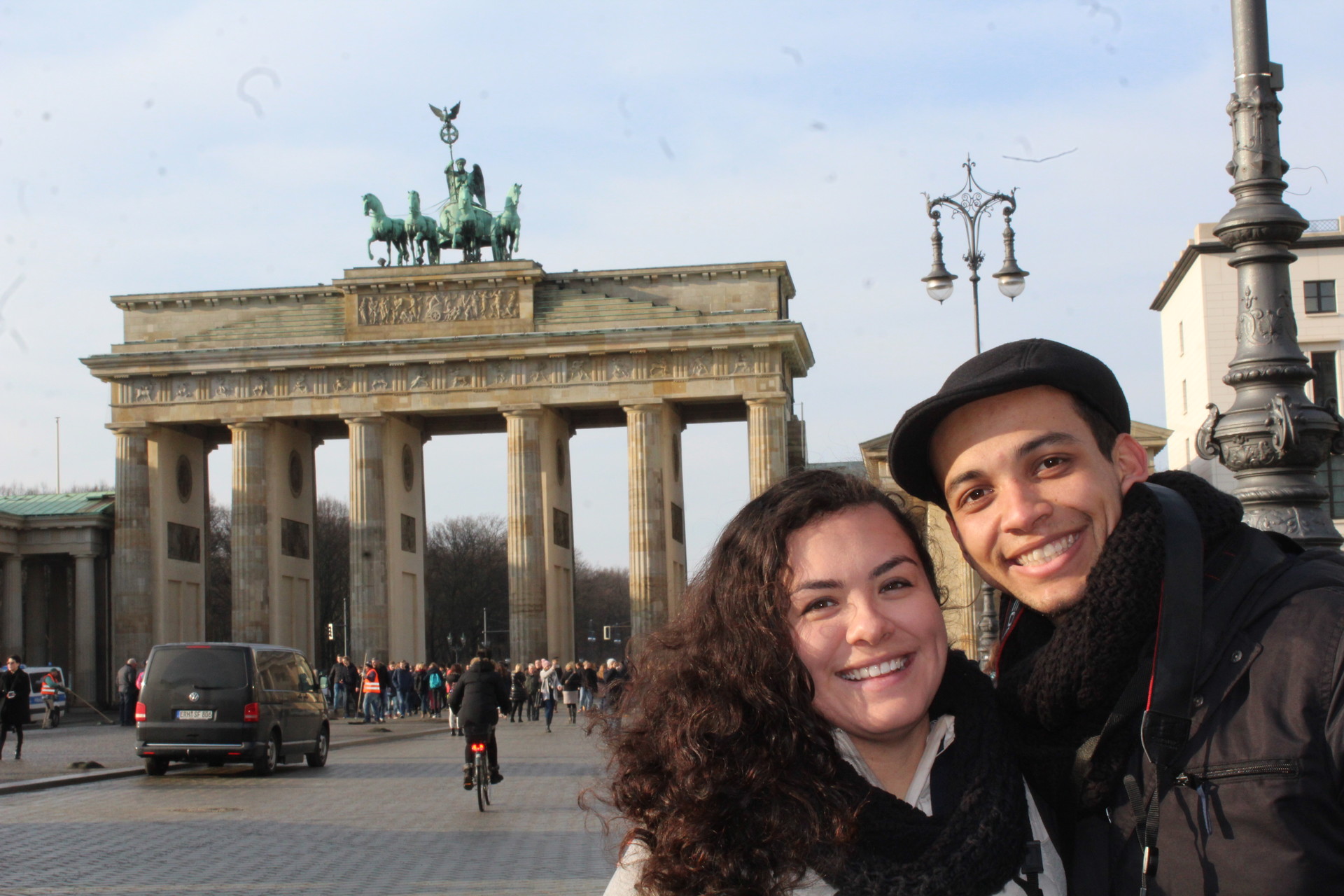
A photo of me and my Brazilian friend Luiz, when we went to visit Berlin together as a farewell trip from our exchange in Madrid.
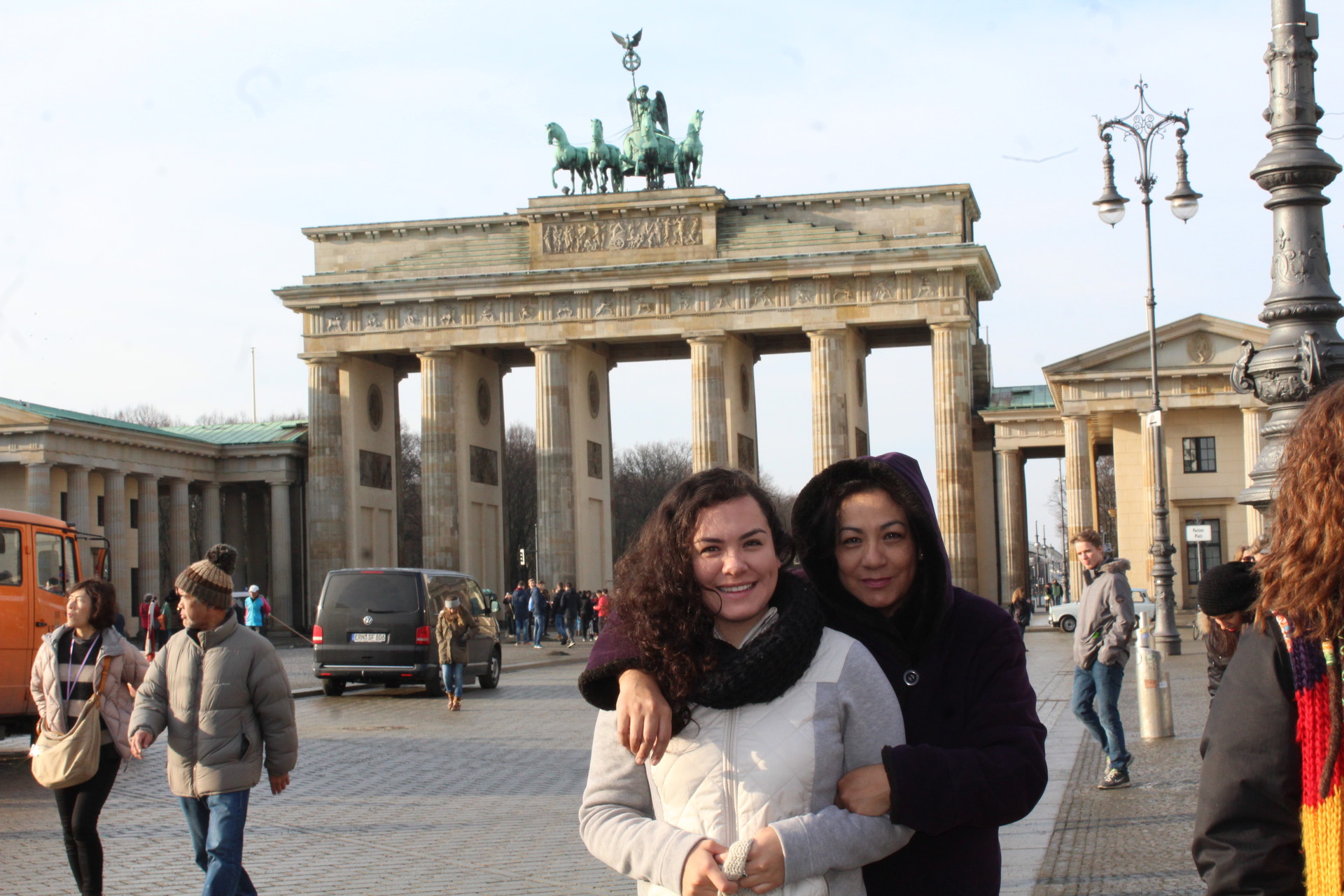
The best thing about being on exchange is when your family comes to visit you. This is a photo of me and my mum.
If you make a detailed observation, you will be able to find 5 gates in between the 6 pillars which stand at a height of 26 meters. On the central-upper part, we can find the Goddess of winged Victory who is seen being pulled by 4 horses. This image has caused much speculation because it has been associated with war as it was chosen as the emblem of Napoleon, but it was actually initially constructed as a symbol of peace. What we see today is a copper copy of the original, which sadly, was destroyed during the Second World War.
Before, it used to allow vehicular access between the gates, but it has been closed from 2002 in order for it to be accessible only by pedestrians (although taxis and some specific cars have permission to pass through the gates) and this is how they are able to protect one of the most important German symbols - so important that the gate is depicted on the 50 cents piece in countries where the Euro is used.
Passing through the Brandenburg Gate used to guarantee death

The Brandenburg Gate seen from Tiergarten. You can see the wings of the God of Victory.
This gate stands next to "Pariser Platz" (Paris Square in English), which is ironically found in Berlin. This square played an important historical role because from 1945 until 1990, this square was a prohibited area of the German Democratic Republic (East Germany) which was socialist Germany at that time. A few meters from the square, the Brandenburg Gate used to serve as a border between East and West Berlin. In fact, access through this gate was closed off for a lot of time during the period when Germany was divided.
This gate was no-mans land and an extremely prohibited zone for citizens, the only people who could pass through the gate were members of the Royal Family and politically important people such as John F. Kennedy, Gorbačëv and Ronald Reagan, who were invited and brought over by the state - they were able to pass through both the Eastern and the Western part of Berlin. In fact, there was a phrase in 1987 which Reagan said to Gorbačëv: "Tear down this wall! ". If you were a citizen and you wanted to pass through the gate, you were guaranteed to be killed. There were always a couple of soldiers which the guns keeping an eye on "no-mans land"; if they saw that you had intentions to go through, they would fire a warning shot into the air; if you persisted, the second would be a shot directly at you until your attempt had been prevented.
The 9th of November 1989 is known as the night of the fallen wall of Berlin, which was a symbol of German unity. The 22nd December of the same year, the pass through the Brandenburg Gate was opened to more than a hundred thousand residents of Berlin - 28 years had gone past in which nobody had passed through there.
Love can do anything
It's very interesting going on walking tours and learning all these things, just like the stories that were made from the division of Germany, and above all, the stories about love. Our guide told us how a couple were separated by the wall, so the man decided to find a woman that looked similar to his love on the side of the wall where he was stuck. On finding a similar looking woman, he established a sentimental relationship with her until the point where they had enough confidence to "go on a trip together" to the other side of the wall. Once they had crossed, they went to a café and the man asked her for some minutes to go to the restroom, but he never came back. Not only did he run away, but he stole her passport so he could give it to his wife and they could pass the borders together so she could be with him again on the same side of the wall.
It's a story of love and indifference at the same time. Stories like these are told so people can understand the extreme lengths that people would have to go to just to see their family or loved ones. It's estimated that approximately 200 people were killed just for trying to cross the wall.
The perfect area for tourist activities
Before arriving at the Brandenburg Gate, you will find the boulevard called Unter del Linden or "under the linden trees", this is just as famous as Times Square is to New York. Here, you will be able to see a lot of trees called "Tilias" which are beautifully coloured in the stations. In this area, you will also find the Opera house, the History Museum and the famous Humboldt University.
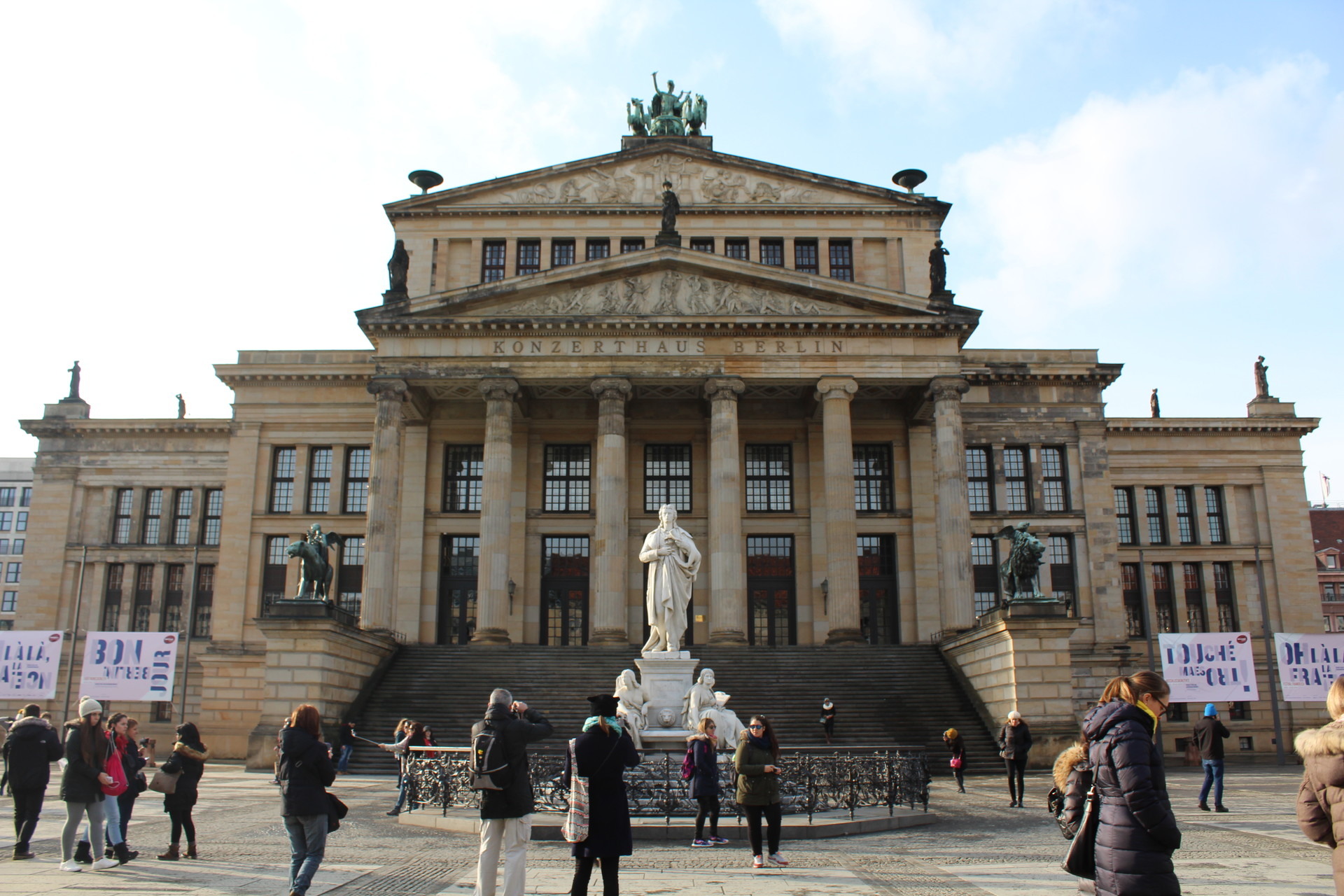
The Opera house building seen from outside.
This is an incredible zone to do some tourist activities, since there are a lot of important, historical attractions in the area. Passing the Brandenburg Gate on the left, you will find the Memorial for Jews assassinated in Europe, which I posted about under the section called "Places" on Erasmusu. I completely recommend going to see it, if you want, you can read about it in my post to give yourself a taste of what it's like. If instead of going to the left, you decide to go to the right, you will find "the Reichstag Building", a governmental building in a Neoclassical style. Passing through the gate and continuing to the right, you will find one of the biggest green-zones in Germany: Tiergarten. In this zone, there are multiple walking trails and very green and natural landscapes where you can walk, cycle or relax.

A section of the Memorial for Jews assassinated in Europe.
The square is a meeting point for the walking tours which they do in the city, what's likely is that they'll register you here should you decide to join one of the tours like we did. You will also be able to take advantage of passing by all the gift shops and souvenir shops here. If you are interested going to the Madame Taussauds wax museum, you can also do that here.
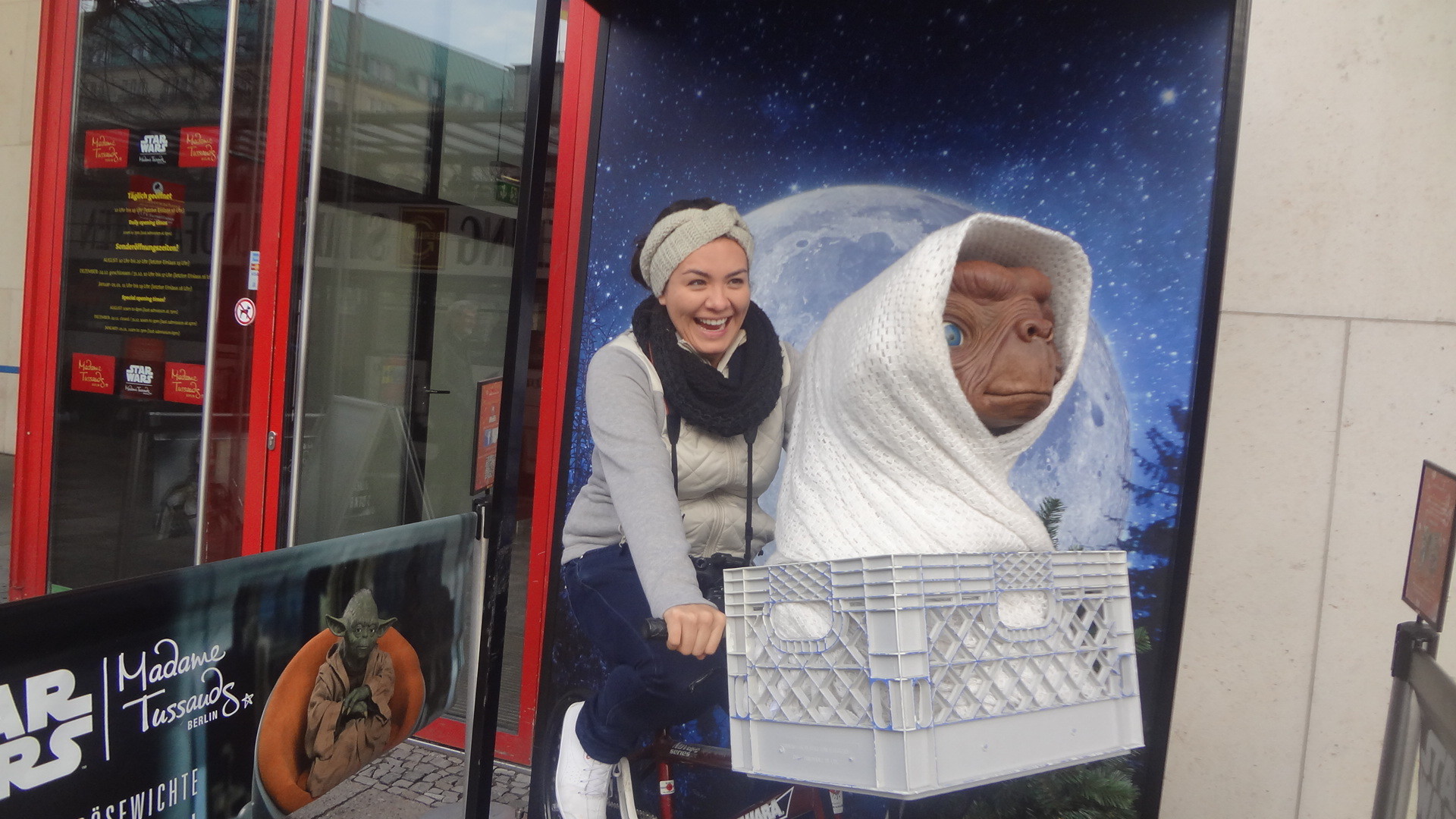
The wax replica of E. T. the extraterrestrial was a sensation for tourists who walked past. An incredible marketing strategy to get people to go into the museum.
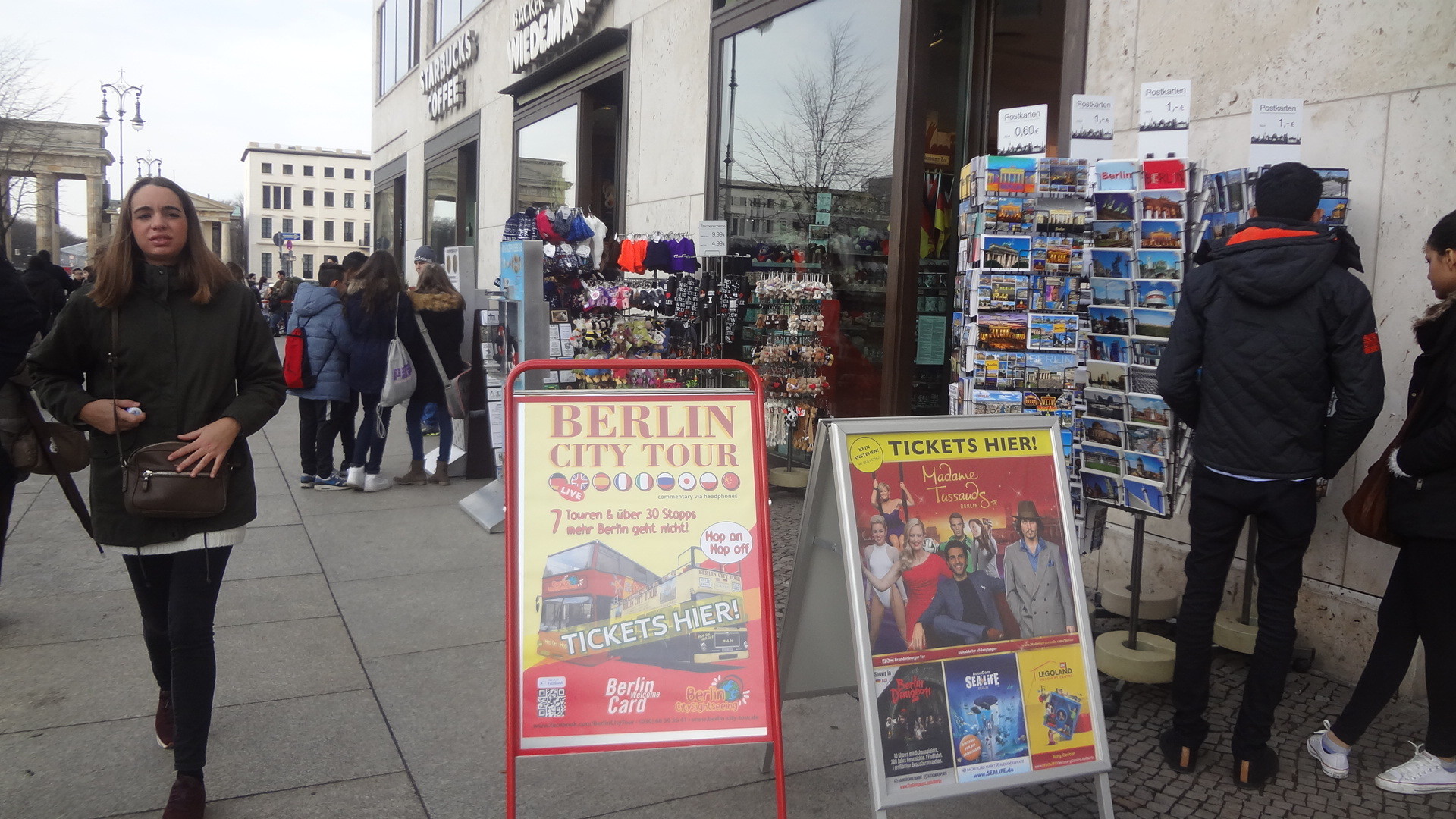
You can buy your souvenirs here but also the tours that you choose, whether that be a paid tour or a free one. You can also find tours which take you to the closest concentration camp to Berlin - Sachsenhausen.
From the gate, you can also see the rooms of one of the most famous and expensive hotels in the city: The Adlon Hotel. This hotel was built in 1907 and subsequently destroyed until after the German reunification when it was then rebuilt. This hotel has played host to a number of international celebrities such as Charlie Chaplin, Herbert Hoover and even Michael Jackson, who gained more fame for the hotel when he dangled his son Blanket off of one of the balconies, who he then pulled back in to the room, but almost slipped at the same time.
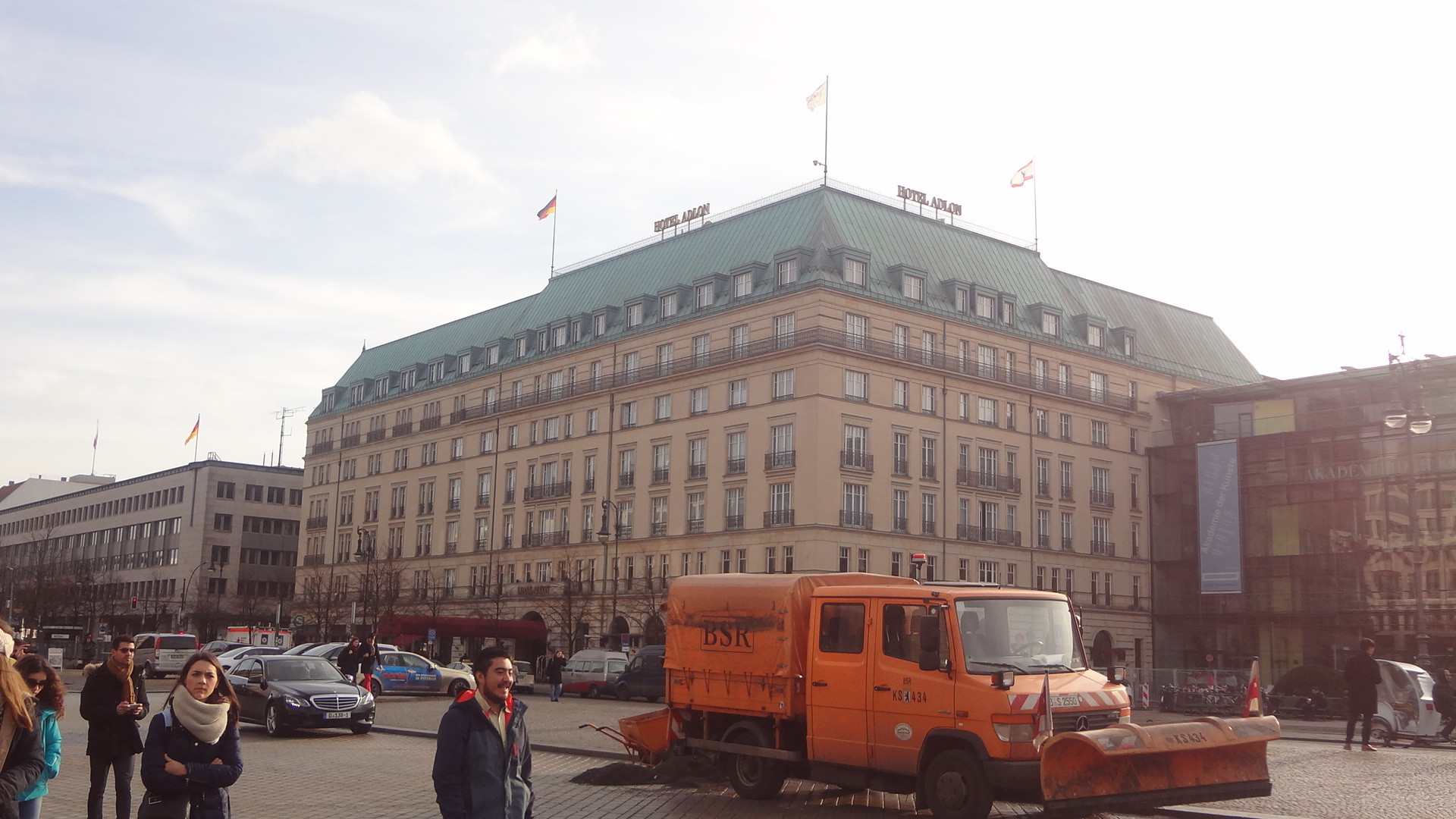
The Adlon Hotel in the background. It's mainly used by politicians, diplomats and reporters nowadays.
Important things to consider when being a tourist in Germany
One of the things that disappointed me is that I had expectations which ended up being very different to reality. I don't think that I took into account that Berlin is a city that is healing bit by bit and the type of tourism that they have there is not the same as the tourism they have in Paris, for example. It's a more reflective and historical tourism, to help people understand why almost the whole city is new and how it is that in the middle of the 21st century, they're still dealing with costs from the war from the past century. They just about finished paying back France the money they owed from the treaty of Versailles in 2015. If you think that Berlin will be a very glamourous and visually attractive city with a lot of old monuments, you're wrong and you might want to reconsider before going, since it might not be your type of tourism.
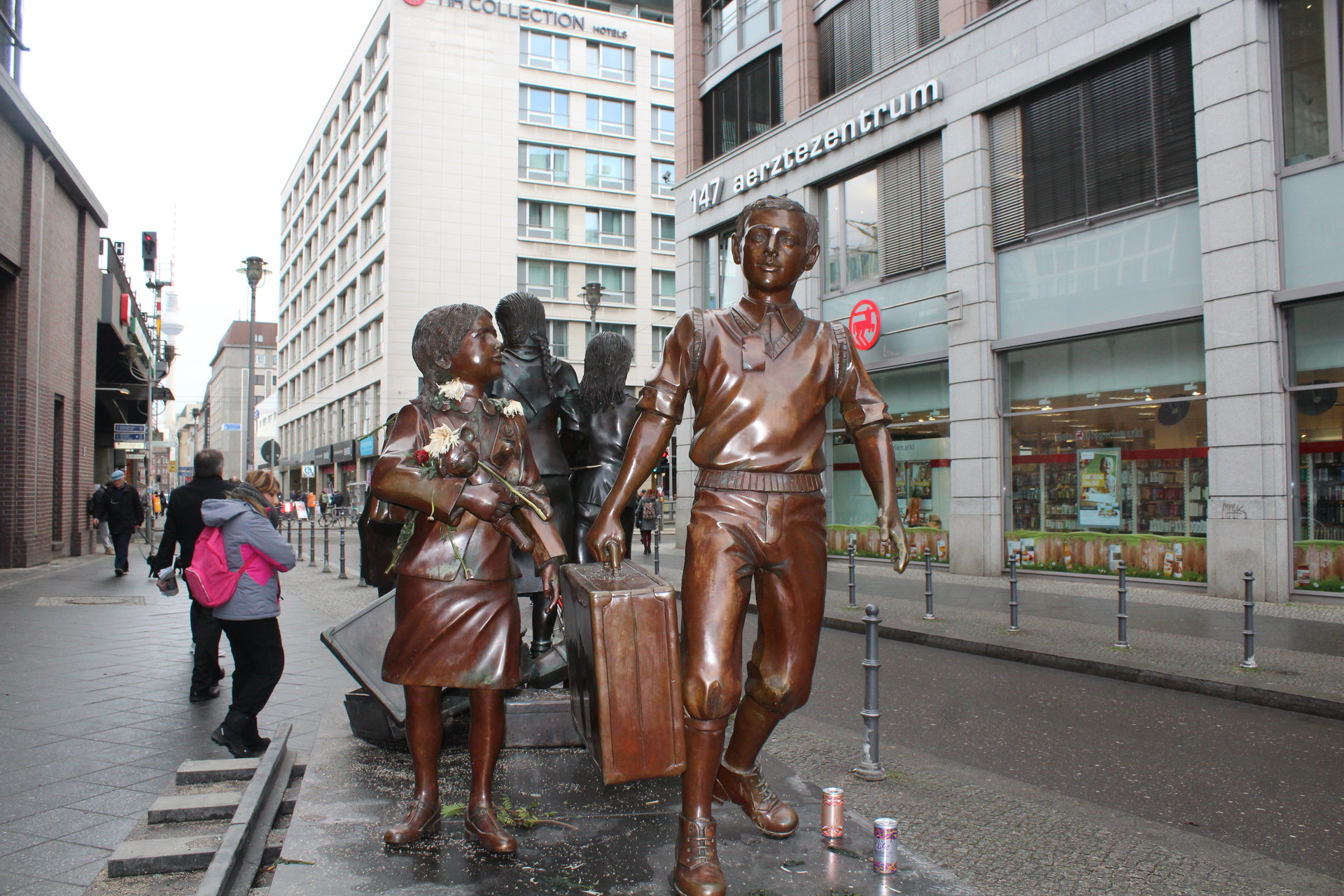
One of the monuments in the area depicting a migrant family. It's incredible to observe the details, the gaze of the little girl looking at her dad as if to say "where are we going to go? " and the dad holding the suitcase without any sort of direction. It really caught my attention seeing the flowers that people left behind.
Photo gallery
Content available in other languages
Rate and comment about this place!
Do you know Brandenburger Tor? Share your opinion about this place.

























